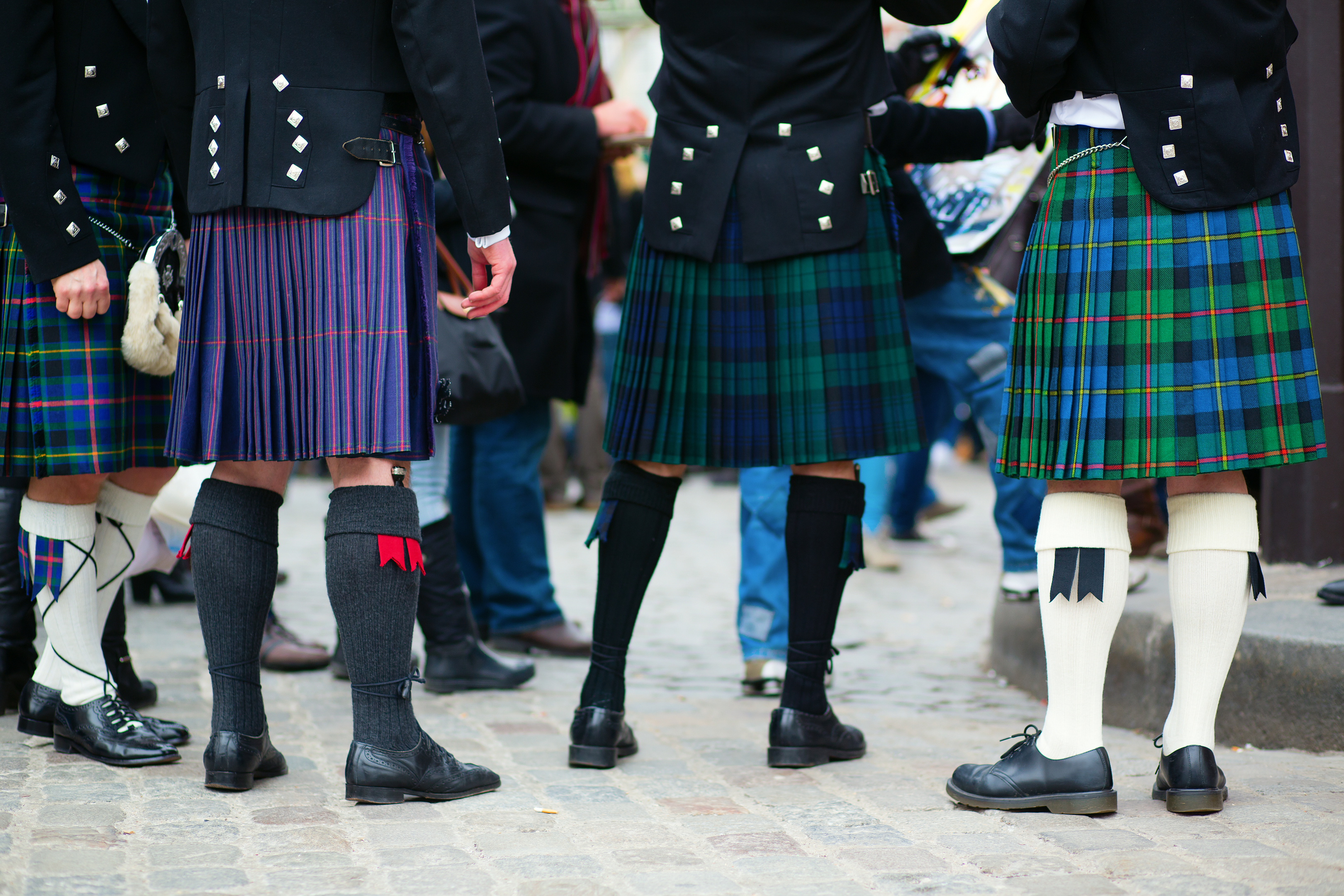
PLANS have been announced for Scotland to get a £9 million tartan museum, which should help attract visitors from around the world.
Brian Wilton MBE, who is a consultant at the Scottish Tartans Authority, told Bill Gibb the Honest Truth about tartan.
What’s the definition of tartan?
Most tartan designs are made up of setts or “tiles” that repeat vertically and horizontally – just like patterned tiles in the kitchen or bathroom. The actual design itself is a unique arrangement of lines and bands using up to six colours all crossing each other at right angles.
When was the earliest tartan?
Believe it or not, the earliest discovered woven tartan is about 3000 years old, found in a desert tomb in Asia. The mummified wearer was tall, brown-haired and Caucasian – in other words a visitor from Europe, one of the early Celts for whom weaving tartan patterns was a
long-established art form.
How did tartan take off from there?
The Celts expanded throughout Europe and when they could travel no further west because of the Atlantic Ocean, they settled.
So there are pockets of Celtic culture to which they brought their weaving skills.
We think tartan was always around but was of no special significance, just a fabric design.
It wasn’t until the late 17th and 18th Centuries that particular designs became associated with Scottish clans.
How many tartans are there?
From just a couple of hundred clan tartans in the 18th Century the number has now expanded to over 5000. Each year about 150 new ones are designed and registered in the official Scottish Register Of Tartans.
The global interest and significance of tartan as a brand, a unique identifier and a vibrant fashion statement has grown beyond imagination.
What about historical figures with big tartan associations?
Bonnie Prince Charlie is probably the historical figure most associated with tartan. If he had worn all the articles of tartan clothing claimed in modern times, he wouldn’t have had time to attend the Battle of Culloden.
And, as part of our historic collection, we do have a pair of John Brown’s tartan underpants – stout flannel boxer shorts in the Royal Stewart tartan of course.
Tell us about some of the myths.
That you must have permission to wear a tartan. There are no “Tartan Police” waiting to pounce and lock you up.
The only tartan that conventionally isn’t available to the public is the Balmoral tartan which is the private tartan for the Royal Family. It was designed in 1853 by Prince Albert, husband of Queen Victoria.
Also that it’s an invention of the Victorians. They certainly embraced tartan and were instrumental in promoting it, but not inventing it.
Any others?
That there’s a tartan for every surname. Tartan was basically a Highland phenomenon, restricted to the established clans. Over the intervening years clan links have been discovered for very many Scottish surnames that can now claim a “genetic” connection with their forebears and their tartans.
What is the Tartans Authority?
We are a registered charity set up to protect, promote and preserve tartan. We work with the businesses involved in the tartan and Highland wear.
Ultimately, we are the only organisation solely dedicated to protecting one of Scotland’s most famous heritage icons.
And what are the plans for a Tartan Centre?
The National Tartan Centre will be a home and showcase for Scotland’s iconic cloth. Although the project is still in the early stages we have found a perfect location for it in Stirling. The centre will include an exhibition looking at tartan through the ages and an area where visitors can research their clan and tartan.
READ MORE
Game of Thrones star Kate Dickie launches world’s first Alzheimer Tartan

Enjoy the convenience of having The Sunday Post delivered as a digital ePaper straight to your smartphone, tablet or computer.
Subscribe for only £5.49 a month and enjoy all the benefits of the printed paper as a digital replica.
Subscribe